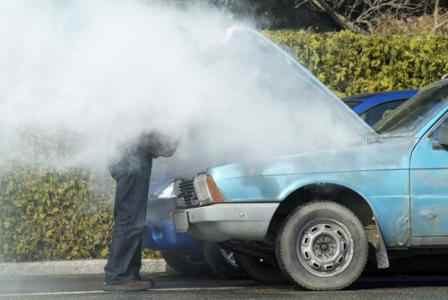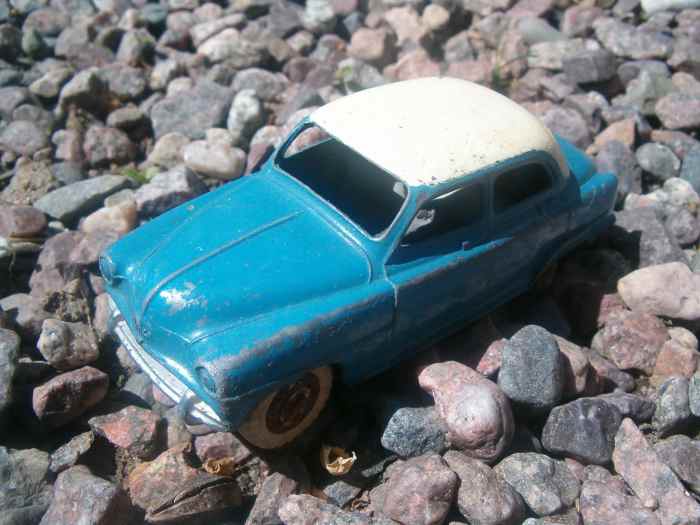Easy Way to Get Heater Core Hose Off
How to Repair a Stuck or Broken Heater Core Hose Quick Connector
Wrench Wench has been in love with automotive mechanics for decades. She loves sharing advice with fellow DIY mechs and curious cats.

Overheating Car
Overheating Car
If you're reading this article, I'd feel safe betting you were directed here for one of two reasons:
- You just replaced a bad heater core in your vehicle and were feeling the rush from being almost done with such a large task, when you started to reinstall the heater hose quick connector and broke it off.
- You were just getting started with removing your heater hoses when you broke the heater hose quick connector.
Either way, you're here. That quick connector is stuck in the manifold, and we're going to get you through this challenge, one way or another.

Classic Blue Toy Hotwheels Car

One type of heater hose connector
Amazon
Can You Fix the Issue Yourself?
Regardless of just how broken your heater hose quick connector is, the aim of this project is to get the remaining pieces out without damaging the threads on the engine block side.
Damaging the threads could end up becoming a very costly ordeal, and would likely be easiest to fix by removing and replacing that area of the block, which is a waste of time and money when only one small delicate part of it was damaged.
Because this automotive project is in the class of easy-to-screw-up-and-create-a-bigger-problem, it requires at least intermediate mechanical experience and aptitude for DIY car repair.
If you're not confident in your ability to adapt when needed, to use the instructions in this or other articles, or to remove the broken heater hose quick connector, take your vehicle to a professional shop mechanic or hire a mobile mechanic ASAP.
Scroll to Continue
Read More from AxleAddict
Should You DIY, Take It to a Professional, or Sell It?
| Continue DIY'ing | Stop & Take to a Pro | Sell It |
|---|---|---|
| You've got at least 6–12 months experience or have successfully repaired similar projects. | You've only worked on a few minor mechanical projects. | You don't have enough experience to DIY and can't afford shop prices. |
| You already have or can afford to purchase all the right tools to perform the job safely. | You don't have the right tools or aren't sure what the right tools are. | The vehicle has more than 250,000 miles and is in poor condition in general. |
| You have the time and space to complete this task in one or two days at most. | You don't have the time in your schedule to complete it in 1–2 days. | |
| You have enough experience to complete the project in reasonable time and the patience to stick with it if it takes longer than expected. | You don't have the patience or ability to complete the task within a few hours. |
Still Want to Do This Project Yourself?
Tools and Supplies You'll Need
- Penetrating oil/lubricant
- Padded pliers or monkey wrench
- Large-tipped flat-tip screwdriver
- Long hollow pipe
- Hacksaw or air saw
- Easy-out tool
- Shop rags and clothes
- Gloves
- Eye protection

Make sure to always have a clean shop rag ready whenever you go under the hood!
Under the Hood
Instructions: How to Remove a Stuck and Broken Heater Hose Connector
- Get your tools & safety gear together, making sure everything is clean and working properly before you start removing the heater hose quick connector (HHQC for short). If your HHQC is broken only at the nipple, move on to step 2. If it's broken down to the threads on the block, you can skip to step 5.
- First, go buy or pull out your favorite penetrating oil or penetrating lubricant. Most folks use WD-40 (which often works great), though I swear by PB Lube Breakers. Great stuff. Do your best to spray the oil or lube into the threaded area that the area of the engine block that the HHQC is still stuck in. If you've broken off more than just the nipple of the HHQC, getting the threads lubricated shouldn't be as hard.
- If the HHQC was only broken at the nipple, you'll want to first try using a pair of padded pliers or vice grips or a small monkey wrench. If you don't have any padded ones, you can use a shop cloth, rag, old t-shirt, some folded paper towels or something similar. This will make it less likely that you'll break the HHQC more than it already is. Then use the padded wrench/pliers to turn the remaining piece of the HHQC (remember, righty-tighty, lefty-loosey); while being mindful that if you use too much force, you could break off even more of the HHQC.
- If you're not able to put enough pressure on the HHQC to turn it without breaking it, try the old leverage trick by finding a long hollow pipe (or something similar) small enough to fit over the handle of your wrench or pliers, that you can use to give yourself the upper hand. If this doesn't work and you haven't broken it further, NOW is a great time to stop doing it yourself and go to a professional.
- If at this point, the HHQC breaks off more, get out your penetrating oil or lube and re/spray the area to try and break the seal a little more. Sometimes a few sprays spaced out will work miracles even when it seems like they are not doing anything. Then use your Easy-Out Tool to remove the remaining part of the HHQC without damaging the threads.
- If that doesn't work, or you don't have access to an Easy Out, you can use a small hacksaw or air saw tool to cut 5 or 6 little slivers into the remaining metal part of the HHQC that can be seen once the rest of the HHQC is broken off. Be very careful NOT to cut all the way through to the threads to avoid damaging them.
- Once you've got a few slivers and notches made, find yourself a large-tipped flathead screwdriver, small pry bar, cat's claw, or something else that has a flat tip small enough to fit into one or two of the grooves but big enough to not break when you start prying. Put the tool into one of the grooves as best you can, then attempt to push or pull on it at different angles until you get the stuck part of the HHQC to turn and come free.
- If you've made it to this step and none of the above tips have worked, now would be the second-best time to stop your DIY project and hire a professional. Though if you're feeling brave or broke, you can try using your cutting tool to cut the rest of the way through the remaining stuck part of the HHQC in 3 or 4 places, and then pull up on each piece until it comes free. Be especially careful not to damage the threads or drop the pieces into the engine block. Both will create new headaches that will be far more complicated to repair.
Cutting Apart a Broken Heater Hose Quick Connector
If you have started your journey as a semi/professional mobile or shop mechanic, and want to prevent future disasters like the one you just survived, I highly recommend you get yourself a heater hose quick connector removal tool.
Just keep in mind if you have a foreign or specialty vehicle, you might need a more specialized tool, or it might be more worthwhile to take your vehicle to a specialty shop where they'll warranty their work.
Learn More About Heater Core Repairs
- Why Is the Heater in My Car Blowing out Cold Air and...
Cold air coming out of your car's heater? How to troubleshoot and fix the problem. Includes advice specific to the Jeep Liberty, Jeep Wrangler, Mini, and Vauxhall Corsa. - Heater Core Installation
By far the easiest installation I've ever performed. This is on a 1993 Ford Explorer. The procedure is the similar for other years of Ford Explorer. - 3 Signs Your Heater Switch Is on the Fritz
There are many reasons that your heater might be giving you the cold shoulder - literally. This article will cover the three most likely reasons why your heater is blowing cold. - Five Signs That Your Car Has a Bad Heater Core
Signs and symptoms of a bad heater core in your car: fog, drips, and funny smells in the cabin, no heat in the cabin, the engine overheating.
This article is accurate and true to the best of the author's knowledge. Content is for informational or entertainment purposes only and does not substitute for personal counsel or professional advice in business, financial, legal, or technical matters.
© 2018 Wrench Wench
Related Articles
Source: https://axleaddict.com/auto-repair/How-to-Repair-a-stuck-or-broken-Heater-Core-Hose-Quick-Connector